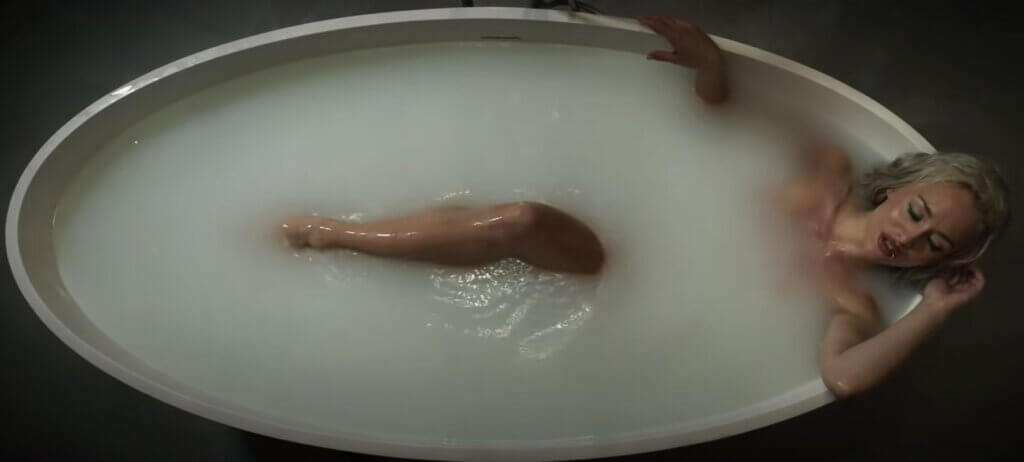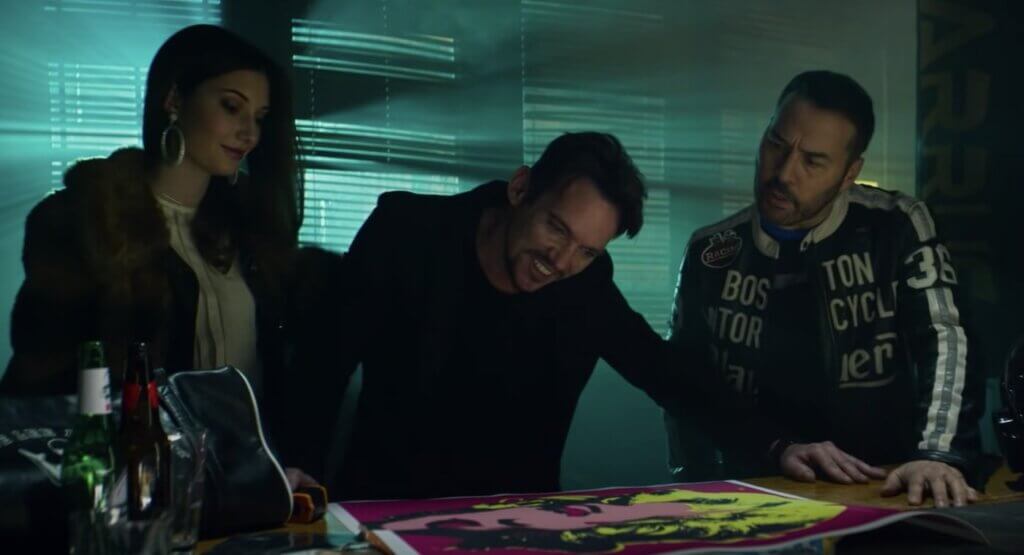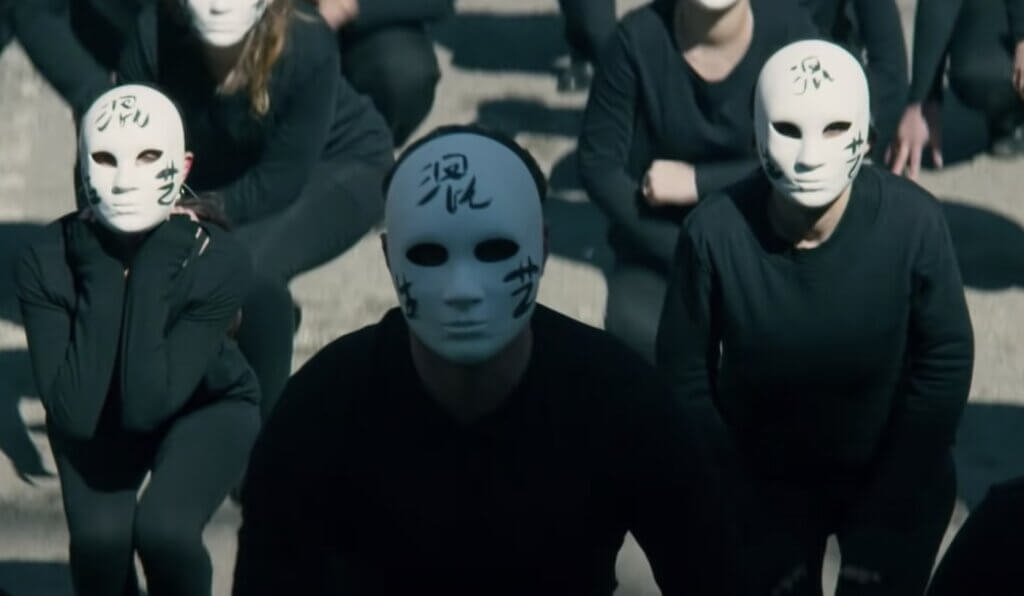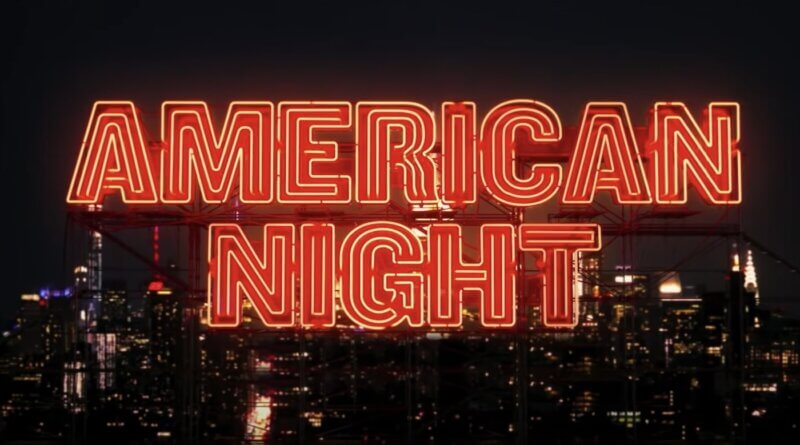American Night (2021), Pop Art, Gangsters, and Metamodernism
It can feel like an easy to escape to describe all derivative art at postmodern, campy, self-reflective, or even metamodernist. The truth is that every film made today borrows from its predecessors in some way, whether it relies on existing modes of production, storytelling devices, visual effects, or something else entirely. “Copying” earlier works has simply become a necessity, to one degree or another. Films like Alessio Della Valle’s American Night (2021) play with the status of pop art and post-postmodern culture (or what I like to refer to as “metamodernism”), in a way that makes overt copying palatable and, at times, highly entertaining.
Much in the same way that Quentin Tarantino blurred the lines between high and low art in Pulp Fiction nearly 30 years ago, Della Valle actively draws our attention to the arbitrary delineations in the world of art criticism. He works this message into nearly every aspect of the filmmaking process, from the story, which focuses on the theft and attempted reclamation of Andy Warhol’s Pink Marilyn, to the casting and title of the film, and everything in between.
Though the story unfolds in a series of random vignettes and disjointed scenes, it ultimately gives us a very firm sense of understanding and closure. John Kaplan (Jonathan Rhys Meyers) is an art forger attempting to open his first legitimate art gallery, shaking off the violence and ugly dealings of his past. Meanwhile, Vincent (Jeremy Piven) is a down-on-his-luck stunt actor and martial arts expert who has struggled with recent bouts of dizziness that have made it impossible to work. Vincent has no desire to get involved with John’s formerly nefarious business deals again, but he’s also desperate for cash. Thus, the two meet for a drink at the very moment when a courier is dropping off Andy Warhol’s Pink Marilyn in the same bar. However, gangsters shoot up the bar and attempt to take back the original painting, which was stolen from Michael Rubino (Emile Hirsche), a wealthy gangster and wannabe artist.

The story unfolds in three acts, each of which differs tonally and aesthetically. When taking in the film as a whole, the tone seems to be all over the place, but this also speaks to the artificiality of Della Valle’s direction. He borrows heavily from others, but still manages to devise something that refuses to fit into a predesigned mold. It’s like an old dog that has somehow learned how to do a few new tricks.
American Night has a lot of tertiary characters who play pivotal roles in the film, but much like Pulp Fiction, the story often takes a backseat to the style. In addition to making a relatively cynical comment on the nature of modern art and art criticism, the film also functions as an amalgamation of dozens of disparate influences. But above all else, American Night showcases the artificiality of cinema, particularly metamodernist cinema, for the sake of its audience.

The title of the film, American Night, also happens to be the name of a nightclub in which several scenes take place, though it doesn’t seem to hold much significance in the grand scheme of things. This works to draw us out of a story that is, frankly, designed to be derivative and cliche. Fortunately, there are plenty of stylistic flourishes and bizarre nods to figures like Andy Warhol and Jackson Pollock, particularly the former, as his art is at the center of the entire film. Consequently, the story is more of a setpiece through which Della Valle’s visual and conceptual vision can come to light.
When casting the film, one can only laugh at some of the choices, as they seem specifically designed to be distracting. Jonathan Rhys Meyers, an Irish actor best known for playing Henry VIII in The Tudors, stars as an American conman and art connoisseur. Additionally, inserting Jeremy Piven as a martial arts-obsessed stunt man opens up a lot of questions, given his short stature and stocky build. Finally, the icing on the cake is Emile Hirsche, a very not-Italian actor playing the ascending Godfather-esque leader of an Italian crime syndicate. None of it makes much sense, but again, this further draws our attention to the artificial nature of the medium. Films are not real, and when we try to read them as recreations as reality, we are almost always disappointed.

Lastly, the cinematography completely abandons reality with jarring transitions from traditionally-lit scenes to neon-colored hallways and sets that would put Dario Argento to shame. The first half of the plot takes place, by and large, within the confines of an obvious studio set, flourished with neon bar signs and highly decorated streets. And while the story borders on camp, the true savior of American Night is the underlying message it sends to viewers: everything you’re seeing is extremely fake, so try not to take it too seriously; just sit back and enjoy the ride.
American Night (2021) Movie Rating: ★★★★ out of 5
If you’d like to watch American Night (2021), it is currently available to rent or purchase via Amazon Prime, as well as various other movie streaming platforms. For more film reviews like this one, be sure to check out the Philosophy in Film homepage!


Pingback: American Night (2021), Pop Art, Gangsters, and Metamodernism – movies